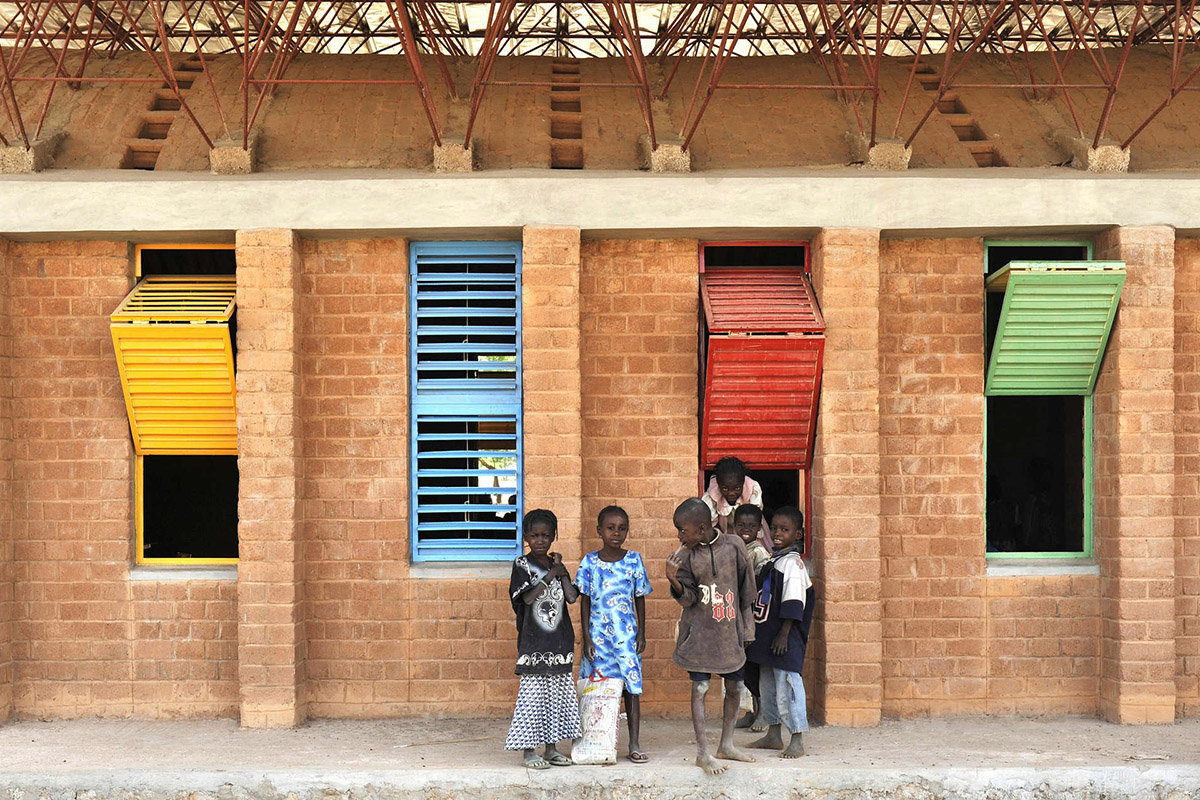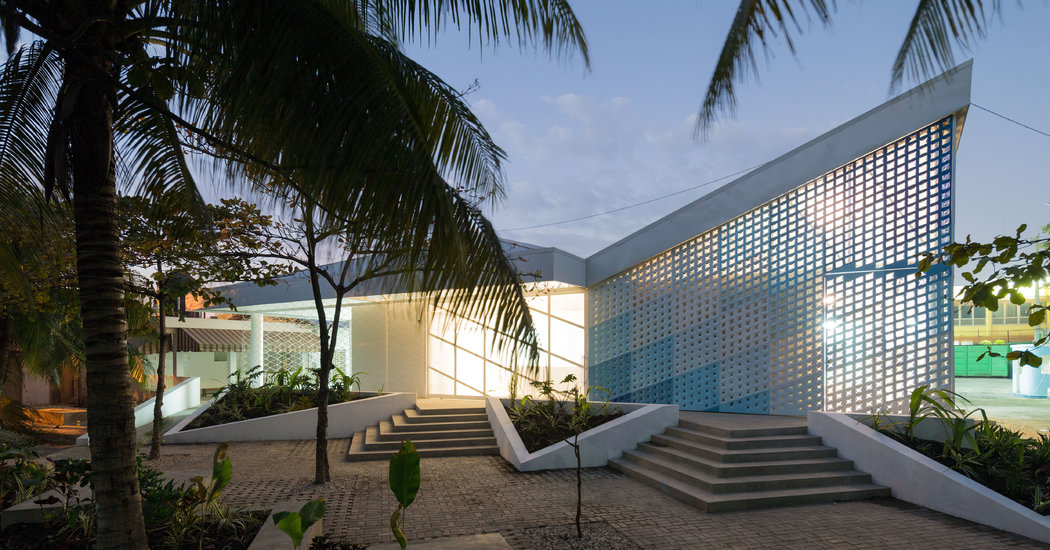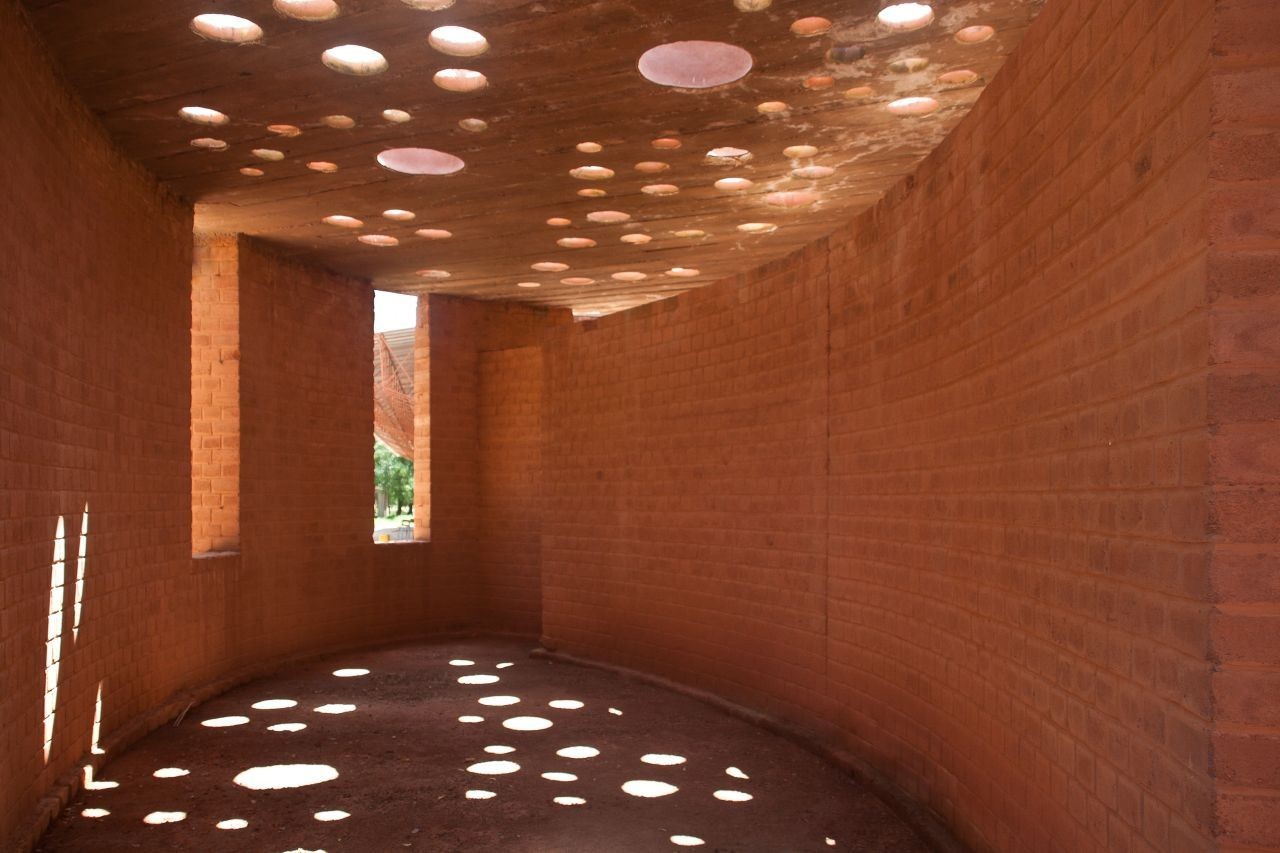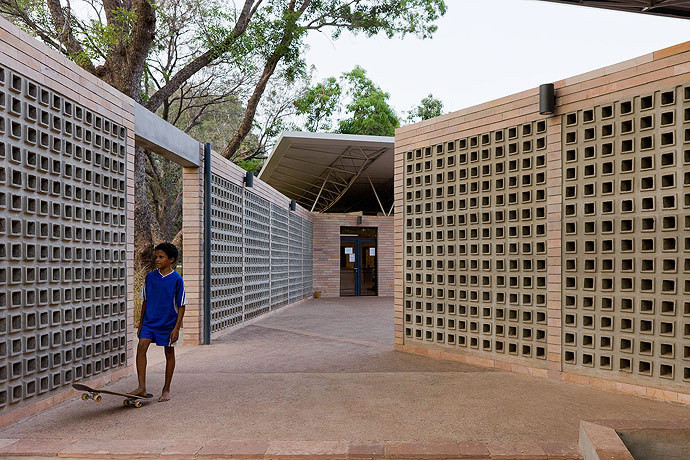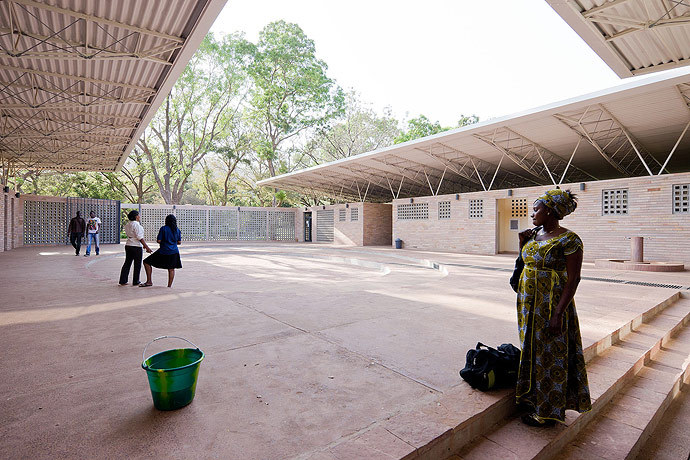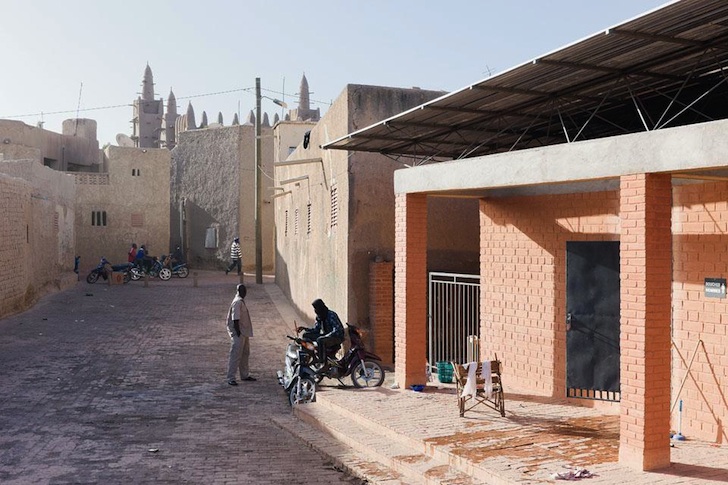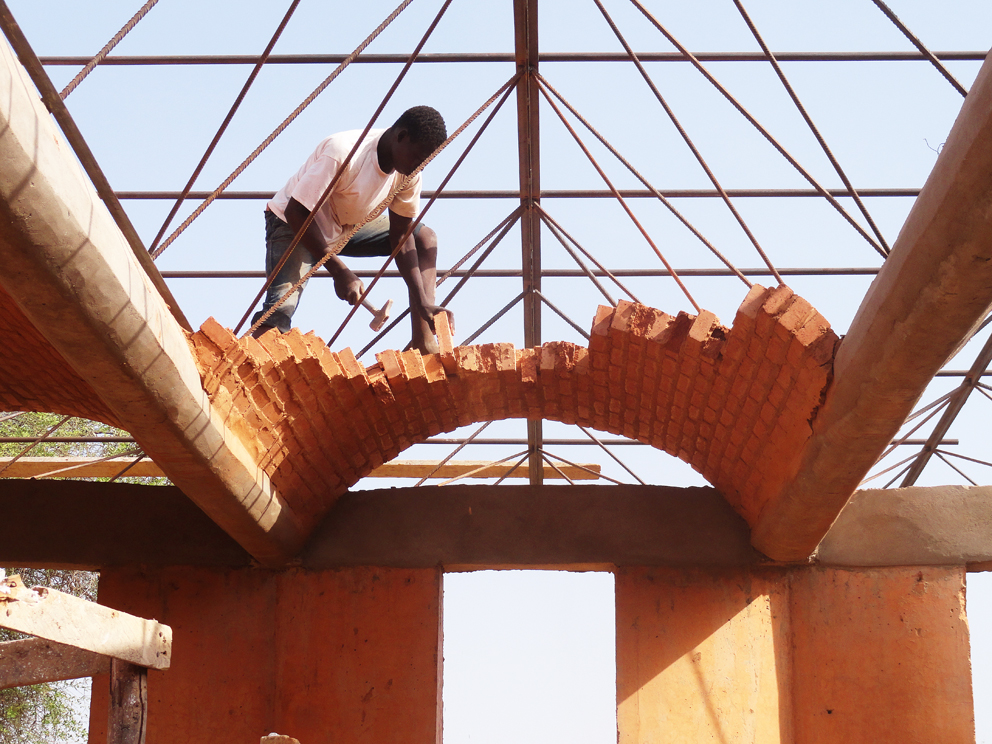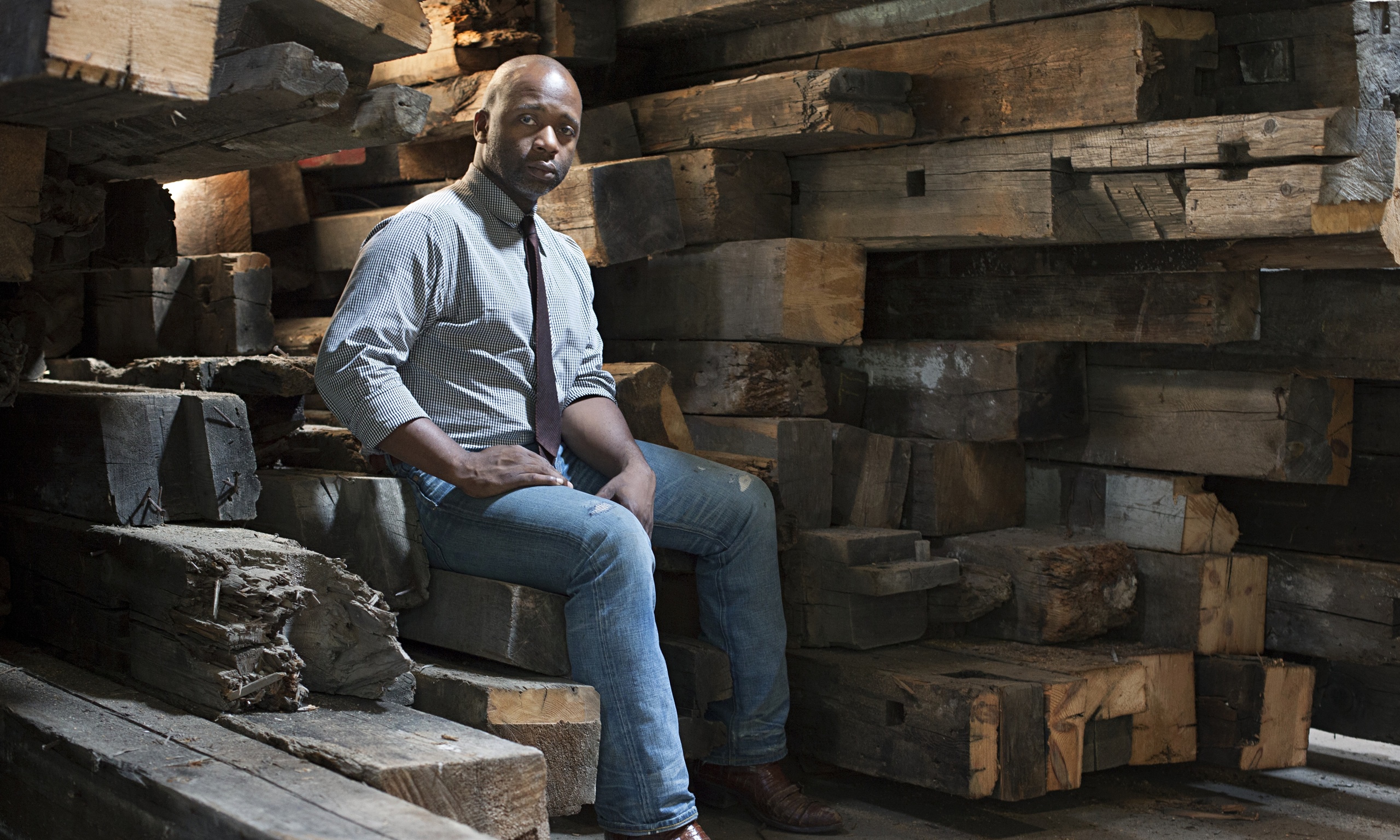-
Changing Skyline: What Western Architects Can Learn From Africa
-
- 01 June 2016

- Inga Saffron
- Opinion , Articles Books & Magazines , Selected Works , Editor's Choice , Architecture , African Modernity , African Greats ,
In this article originally published in the Philly, Inga Saffron, an architectural critic, looks at the influence of Francis Kéré on sustainable community architecture and skill building and how it has reverberated in Western countries with similar excitement surfacing in different forms within Africa and the rest of the world.
Francis Kéré had to travel long and far from his tiny farming village in Burkina Faso, an African nation that skirts the edge of the Sahara, before he ended up with a show at the Philadelphia Museum of Art. As a boy of 7, he was sent away to a larger town to attend school. Later, he made his way to Germany to study architecture. In 2001, he took his design skills back to his village and fashioned a modern school out of handmade mud bricks. That one-story structure may look like a simple little schoolhouse - albeit one with a rakishly tilted metal roof - but its impact has reverberated around the globe, adding momentum to a movement known as public-interest architecture. Initially focused on the needs of impoverished, Third World societies, Kéré's design approach is now inspiring First World architects eager to tackle similar problems of sustainability and equity.

You can see spin-offs close to home in the rough-hewn workshop that Digsau Architects helped high school dropouts build in Wilmington and in the student-built playgrounds that Public Workshop is overseeing in Philadelphia and Camden. Kéré has also influenced the work of Cambridge's MASS Design Group, which won plaudits for a passively ventilated hospital in Haiti, and Theaster Gates' cultural installations on Chicago's South Side. But what they're doing came out of Africa. To understand how the movement started, you need to make your way to the art museum's Perelman Building. Kéré, based in Berlin, is one of several artists included in Creative Africa, a survey of African culture that runs until Sept. 25. His segment of the show easily stands on its own. Called Building for Community, it picks up on the themes of the Museum of Modern Art's influential 2010 survey, Small Scale, Big Change, which was the first to feature Kéré's work.

Gheskio Clinic By Mass Design Group in Haiti Courtesy Iwan Baan
Kéré, now 51, was still a student at the Technical University of Berlin when he made the connection between environmental sustainability and economic sustainability. Burkina Faso, one of the world's poorest countries, was spending huge sums to import Western-made construction materials, even as its citizens struggled to scrape together a meager living. He decided his thesis project - building a school for his hometown, Gando - would use only local labor and local materials. The project, which involved the whole village, ended up winning the prestigious Aga Khan Award.

A series of similarly organized projects followed in Africa, China, and Europe. The museum has given Kéré its Collab Gallery to display models, photographs, and video to document his work and methods. He even brought over the wooden tool his mother used to compact the school floor into a soft carpet of dirt. Rather than just document past work, curators Kathryn Hiesinger and Colin Fanning encouraged Kéré to create a demonstration project for the Perelman atrium. Outside the gallery entrance, the architect has assembled what looks like a forest of candy-colored vines - or a mod car wash. The installation, suspended from mosquito net frames, is so seductive you'll want to throw yourself into its dense tangle.

The Vines which are actually parachute cords, start out as a tight grid, not unlike the arrangement of Philadelphia's streets, then part to create clearings, round in form, that suggest the discs of shade created by African baobab trees. Kéré has essentially overlaid Gando's free-form layout atop William Penn's formal, Enlightenment-inspired street pattern. In Burkina Faso, the shade trees are the communal gathering places, the equivalent of Penn's squares. The installation is more than just a friendly homage to two different cultures, however. Its creation effectively replicates the process that public-interest architects use to realize their projects. Though Kéré did the design and specified the materials, construction was a group effort.
Museum staff, students, and other volunteers spent days knotting the cords and cutting them to form arches and passageways. Like Kéré's projects in Burkina Faso and Mali, the materials cost almost nothing, but construction was incredibly labor intensive. You could also say the resulting structure is passively ventilated, just like his African buildings. Kéré's approach to sustainability differs significantly from America's LEED model, with its focus on a checklist of environmental features. By using materials found on the site, like mud, and local labor, he aims to leave people with the skills to construct the next building on their own. Ironically, those ideas weren't an easy sell in Gando. "When I told them I wanted to build in mud, they were shocked," Kéré recalled as he showed me around the exhibit.
Even though earthen construction is one of the oldest and most environmentally friendly ways of building, Gando residents saw mud bricks as a symbol of their poverty. Having sent one of their own all the way to Europe, they felt they should be building with Western materials. What won them over was the design. Most mud-brick buildings in Africa are slapped together and deteriorate quickly. Kéré was able to demonstrate that this modest material could be used with sophistication. When compacted and installed properly, the bricks take on a velvety texture that can withstand decades of rain and wind.

The ideas in the show resonate with concerns about the state of construction in the U.S. We also import more and more foreign, labor-saving materials.
Public-interest architecture can work when designers don't have to answer to the needs and time frames of for-profit clients. Digsau's Wilmington workshop took seven years because it was built by young men learning construction skills on the job, using only scavenged wood. In Theaster Gates' Chicago projects, his emphasis is on turning local residents into makers. Those architects also had to rely on crowd sourcing or foundation grants to support their work. So, although it's hard to imagine this approach making the leap to large-scale construction projects, public-interest architects can still leave their mark on communities. When Kéré was growing up, he was the only child in his village to get an education. Today, his school in Gando accommodates 900 students.
Diébédo Francis Kéré: How To Build With Clay... and Community
Diébédo Francis Kéré knew exactly what he wanted to do when he got his degree in architecture... He wanted to go home to Gando in Burkina Faso, to help his neighbors reap the benefit of his education. In this charming talk, Kéré shows off some of the beautiful structures he's helped to build i...
SHARE YOUR THOUGHTS
-
If you want your own avatar and keep track of your discussions with the community, sign up to archiDATUM >>












